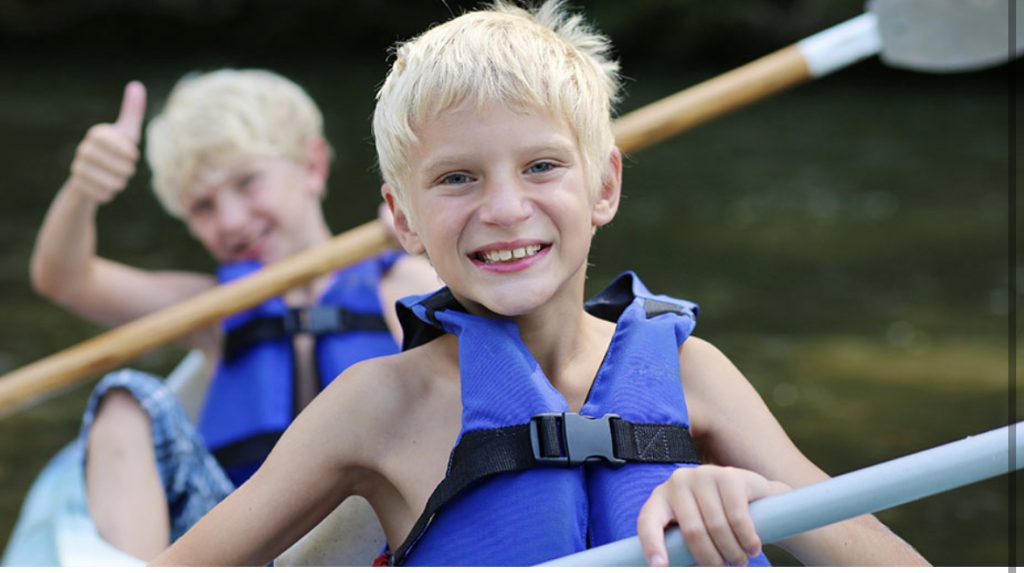(Media release from Atrium Health Floyd):
A big part of warm-weather fun is playing in or on the water, but failing to follow safety precautions can turn that fun into tragedy.
Most swimming and boating accidents and deaths can be avoided by using common sense. Following safety suggestions can help make sure your future outings are fun and not frightful.
“Here at Atrium Health Floyd EMS we want you to enjoy your time swimming and boating, but keep safety in mind and be careful. We want to see you out having fun, not in the back of our ambulance,” said EMS Capt. Greg Goedert.
Watch the kids
Be watchful when children are in the water. You can never be too careful. Drowning results in more deaths among children ages 1 to 4 than any other cause except birth defects.
Whether in a pool or a lake, children need to be monitored carefully. When a crowd is present, don’t assume someone else is watching your child if you step away to get a drink of water or a hot dog.
“It is advised that all parents keep an eye on their own children and that they choose a designated watcher if they have to leave while their kids are in the water,” said Goedert. “Never assume someone else is watching.”
Be aware of the water
If you are unfamiliar with where you are swimming and it is shallow, exercise caution when you enter. Don’t dive into water if you don’t know how deep it is or what might be in it. Enter feet first and be observant about the conditions.
Most safety tips warn that you should make sure if you dive the water is at least 9 feet deep with nothing in it that you might hit. Also, that 9 feet rule is only good if you are standing at the water’s edge. If you are diving from a boat or any other elevated place, you need to make sure the water is deep enough.
If you are swimming in the ocean, avoid areas with moving water, waves or rip currents. A rip current can pull you out into deeper water and make it very difficult to swim directly back to shore. If possible, swim where lifeguards are present and be aware of weather advisories that can indicate if there are any dangers.
Avoid alcohol use
Alcohol can affect your judgment, coordination and stamina. While often having a drink or two is often associated with summer fun by the water, mixing the two is not a good idea. If you suspect someone has been drinking, try to encourage them not to get in the water, and driving a boat is out of the question.
“Boating and alcohol just don’t mix,” Goedert said. “It doesn’t matter if you fall out of a speed boat or an inner tube if you are drunk. Chances are someone is going to have to rescue you.”
According to the Centers for Disease Control and Prevention, the use of alcohol is involved in:
up to 70% of deaths associated with water recreation
nearly 1 in 4 emergency department visits for drowning
about 1 in 5 reported boating deaths
Some prescription drugs can also increase the risk of drowning, especially medications that are often prescribed for depression, anxiety, bipolar disorder, schizophrenia, and other conditions. According to the CDC, side effects from these medications can be similar to the effects of alcohol, including poor judgment and decreased coordination.
Boaters should follow life preserver regulation
All boats must be equipped with Coast Guard approved life preservers, also known as personal flotation devices (PFDs), for each person aboard. Children under age 13 must wear a correctly sized PFD when the vessel is under way, unless they are a fully enclosed and roofed cabin.
People on personal watercraft, such as a Jet Ski, are also required to wear PFDs
Watch out for others
While it may seem obvious, boats can be dangerous to swimmers, skiers and other boaters around you. Please use common sense. It can be hazardous towing water skiers near swimming areas or near other boats. Don’t drive your boat across the wake of another boat if you are within 100 feet.
“Just keep your eyes open if there are lots of boats around,” Goedert said. “You might see something the driver doesn’t. On a crowded day on the water everyone needs to be watchful.”
